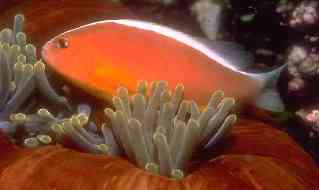![]()
SvS Biology 2000 - Caught in the Web
Predation, Symbiosis and Parasitism
In an ecosystem, living organisms have different kinds of relationships. One is predation, a relationship in which some organisms become the food for others. Its interplay, known as the predator-prey relationship, is described by creating food webs or a food chain to depict the impact of one organism feeding on another. Symbiosis has two forms: mutualism and commensalism.
Mutualism is a beneficial arrangement for both organisms. Many mammals, for example, are hosts for "good" bacteria which help these animals to digest their food, as in the bacteria in a cow's rumen aiding in breaking down the cellulose (which the cow would otherwise be unable to break down) and the bacteria gain a food supply, and perfect conditions for reproduction.
Commensalism is where one organism benefits whilst the other remains unharmed. An example of this is the interaction between the clown fish and the sea anemone. The anemone doesn't benefit, but the clown fish gains protection from predators because of the poisonous tentacles of the anemone to which it is immune.

The third relationship is parasitism. In this arrangement, one organism, the parasite, feeds on another, the host. A dog (host) with fleas (parasite) is an example of this relationship. Some decomposers are parasites - others are saprophytic. These latter ones feed on dead organic tissues, instead of on living tissues.
S. van Strien